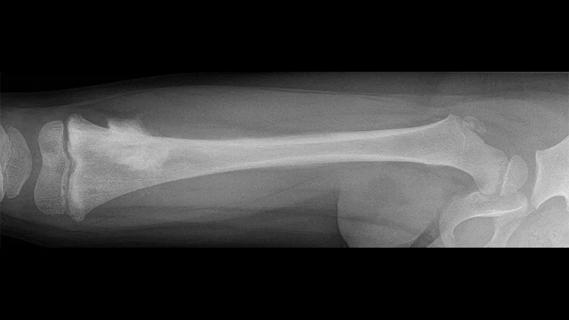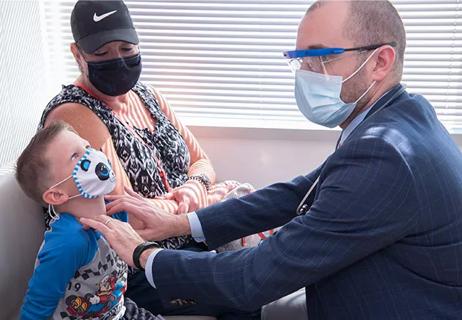Iliac crest structural autograft repairs large, uncontained defect
A 74-year-old woman presented seven years after right total shoulder arthroplasty. She noted increasing pain and functional limitations in the shoulder, without injury, over the past one to two years. Upon exam, she exhibited passive forward elevation of 150 degrees with active forward elevation of 130 degrees with pain, passive and active external rotation of 50 degrees, and active internal rotation to the lower thoracic levels.
Advertisement
Cleveland Clinic is a non-profit academic medical center. Advertising on our site helps support our mission. We do not endorse non-Cleveland Clinic products or services. Policy
X-rays of the shoulder replacement, when compared to immediate postoperative imaging, showed evidence of subsidence and associated loosening of the humeral component as well as loosening of the glenoid component with associated osteolysis.
“We obtained a preoperative CT scan to better evaluate her glenoid bone loss,” says Eric Ricchetti, MD, Director of the Shoulder Center in Cleveland Clinic’s Department of Orthopaedic Surgery. “We could see on both the axial and coronal images evidence of significant glenoid bone loss, both within the glenoid vault centrally as well as posteriorly, with an uncontained defect and loss of the posterior glenoid vault wall.”
View these images in the video, above.
Dr. Ricchetti elected to proceed with revision to reverse total shoulder arthroplasty, addressing the large, uncontained glenoid defect with a structural autograft from the patient’s iliac crest. The placement of the autograft addressed both the central glenoid bone loss and the uncontained posterior glenoid bone loss.
The patient recovered well. Four years after surgery, the patient reported no pain complaints, with her active forward elevation improved to 150-160 degrees, passive and active external rotation to 50-60 degrees, and active internal rotation to the mid-thoracic levels. X-rays show incorporation of the autograft in the native glenoid.
This case study reflects the favorable outcomes published by Dr. Ricchetti and Cleveland Clinic’s Shoulder Research Group in a 2019 study of iliac crest structural bone autografts in revision reverse shoulder arthroplasty.
Advertisement
At two-year follow-up, patients with use of iliac crest structural bone autografts for large, uncontained glenoid defects reported a median Penn Shoulder Score of 77 (out of 100, where higher scores indicate better function, lower pain and higher satisfaction) while patients with use of nonstructural bone allografts for small, contained glenoid defects reported a median score of 83 — a difference that was not statistically different. Both groups also showed similar improvements in shoulder range of motion after surgery, with no difference in rate of revision surgery.
Advertisement
Advertisement

Conventional arthroplasty performs better than reverse arthroplasty for patients with an intact rotator cuff

Case study of radial-to-axillary nerve transfer for tumor-related deltoid nerve injury

Study also finds that 26% of children with cancer have mutations in DNA repair genes

Rare genetic disorder prevents bone mineralization

Sinus tracts can occur years later and not near the incision site

Research highlights promising outcomes for treating recurrent and metastatic cases

Biologic approaches, growing implants and more

Multicenter effort aims to standardize information about diagnosis and early management